This week’s feature is a post by George Riser, Collections and Instruction Assistant for the Albert and Shirley Small Special Collections Library.
“American Broadsides to 1860 features 72 broadsides—almost exclusively American and dating prior to 1860—drawn from the holdings of the Albert and Shirley Small Special Collections Library. Arrayed in six sections—Proclamations, Political, Military, Goods and Services, Town and Country, and Literary Arts—these examples attest to the broadside’s varied content and breadth of function, while offering a fascinating account of life in early America. They also complement what is perhaps the most significant of all American broadsides: the “Dunlap Broadside” (first printing of the Declaration of Independence) on view in the adjacent Declaration Gallery.” Text by David Whitesell from the exhibition’s introductory panel.
The following is a sampling of what you will find in each of the exhibition’s sections.
The earliest broadside on display is found in the “Proclamations” section. “By the King. A Proclamation for the Suppressing a Rebellion Lately Raised Within the Plantation of Virginia,” is King Charles II’s 1676 response to Nathaniel Bacon’s rebellion, which was raging in the fledgling Virginia colony.
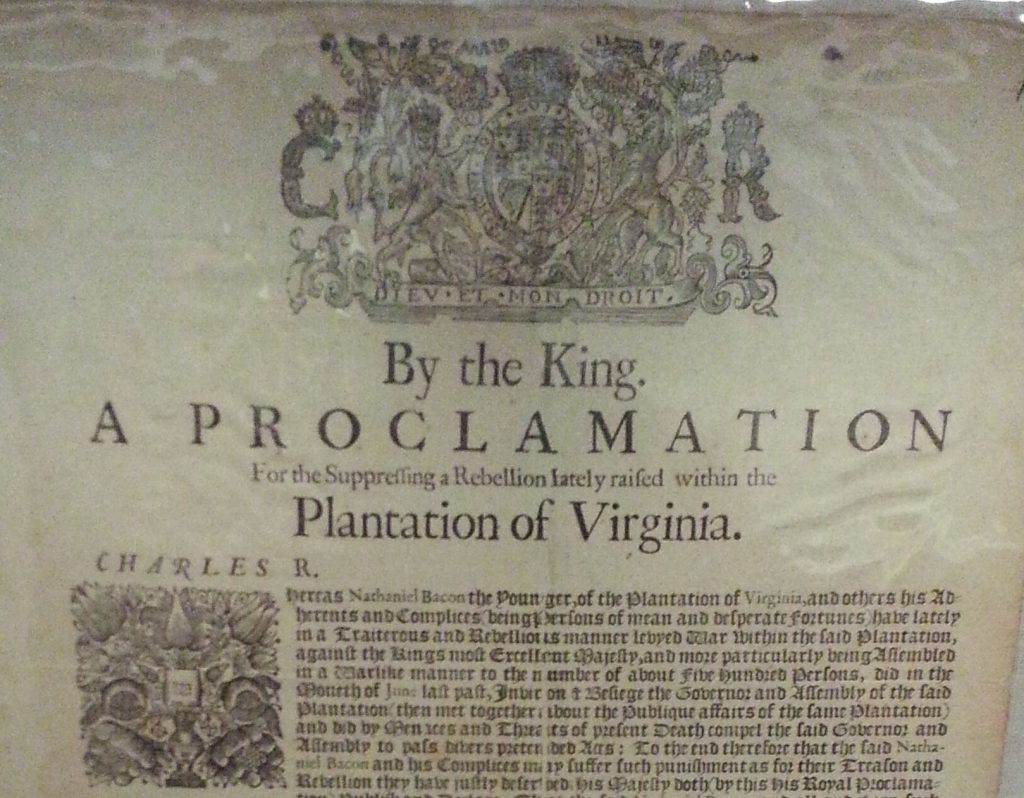
Detail of Charles II (1630-1685). By the King. A Proclamation for the Suppressing a Rebellion Lately Raised Within the Plantation of Virginia. London: Assigns of John Bill and Christopher Barker, 1676. (Broadside 1676 .G744 S63). Photograph by Petrina Jackson.
In the “Military” category, “Boston, 26th of June, 1775,” features a first-hand account, printed just nine days after the Battle of Bunker Hill, offering a somewhat rosy view of the catastrophic attempt to dislodge 1,200 colonial troops who had taken up positions in the hills surrounding Boston.
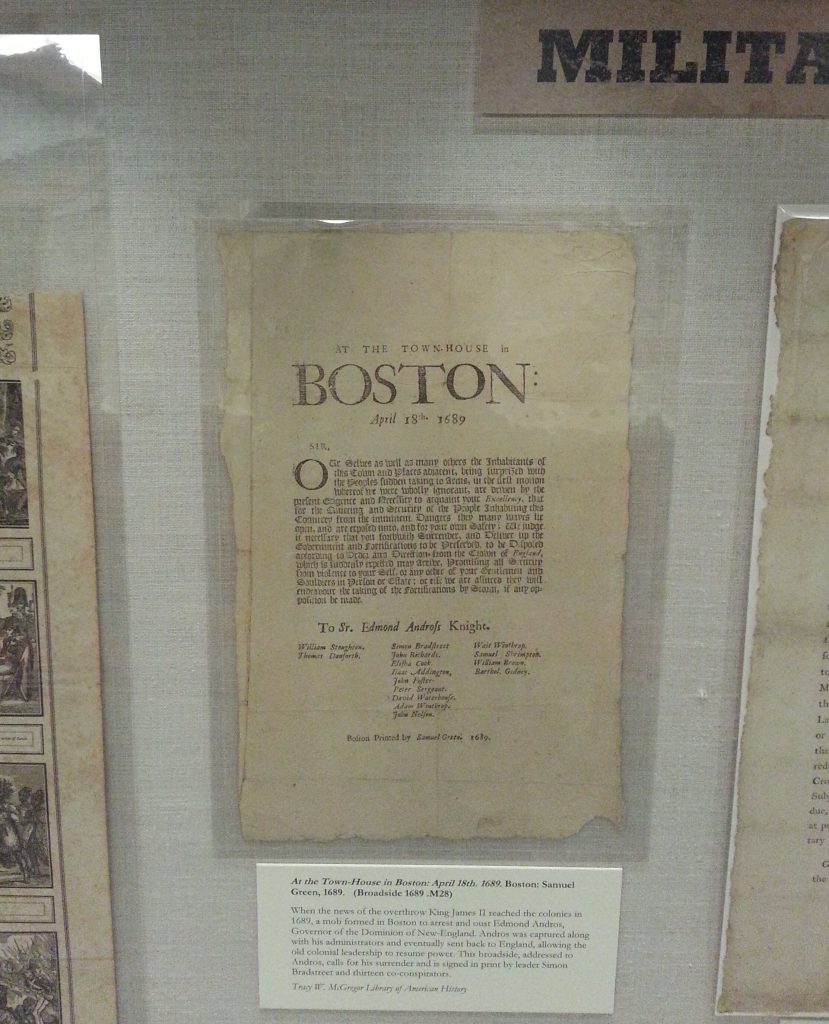
Boston, 26th of June, 1775. [Boston: John Howe, 1775] (Broadside 1775 .B67). Photograph by Petrina Jackson
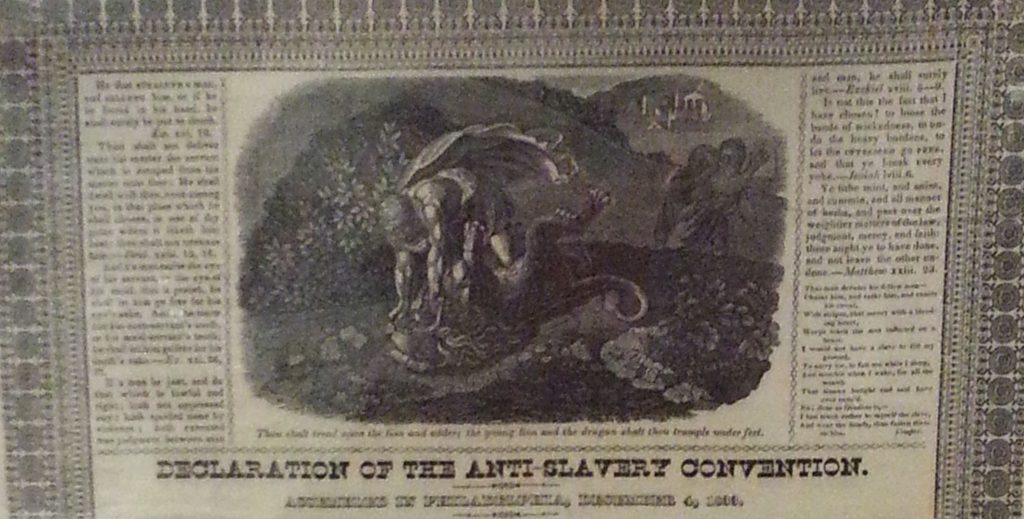
Detail of Declaration of the Anti-slavery Convention. [Philadelphia] : Merrihew & Gunn, [1833] (Broadside .W54 Z99 1833). Photograph by Petrina Jackson.. Photograph by Petrina Jackson.
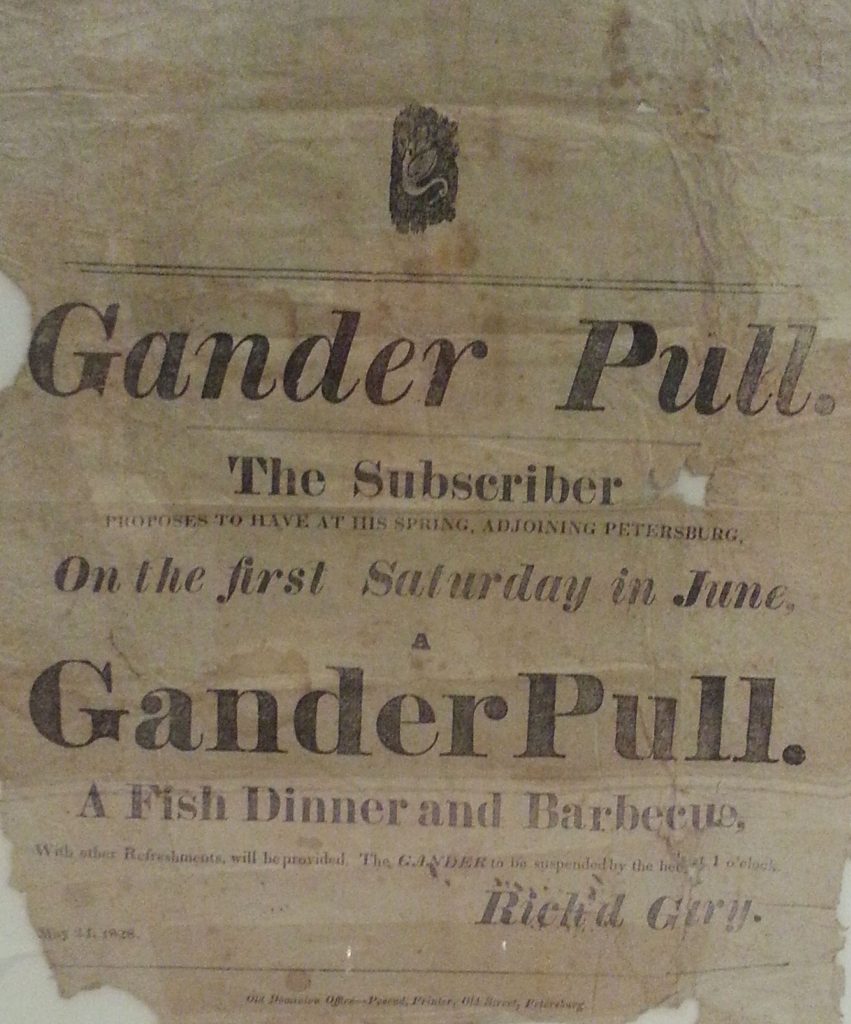
Gary, Rich[ar]d. Gander Pull. Petersburg [Va.]: Old Dominion Office, [1828] (Broadside 1828 .G27). Photograph by Petrina
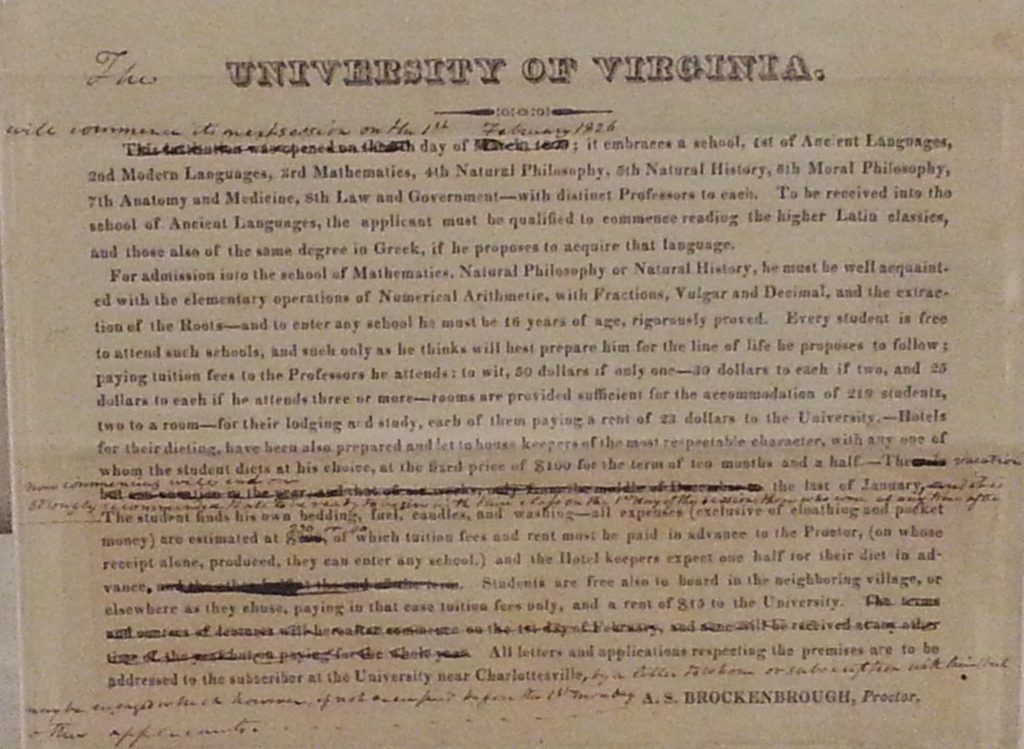
University of Virginia. This Institution Was Opened on the 5th Day of March, 1825 … [Charlottesville: University of Virginia, 1825?] (Broadside 1825 .U65).. Photograph by Petrina Jackson.
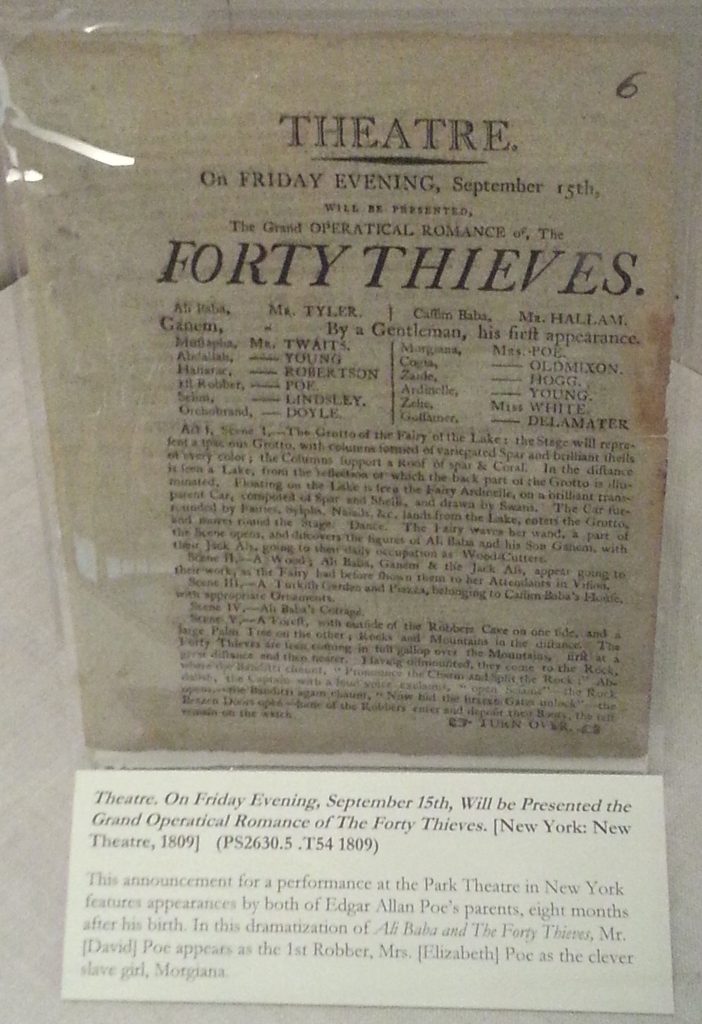
Theatre. On Friday Evening, September 15th, Will be Presented the Grand Operatical Romance of The Forty Thieves. [New York: New Theatre, 1809] (PS2630.5 .T54 1809). Photograph by Petrina Jackson


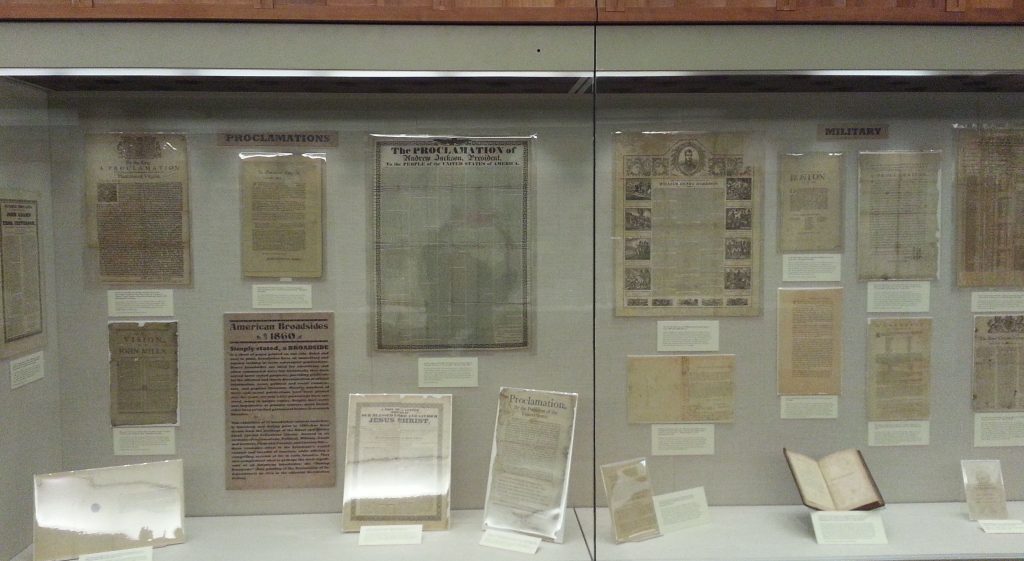
This is wonderful. What is the duration of the exhibit?–Pat Earnest
And this next part is not necessary to post for view–but I would love to share it on my website, Passed Time, with your permissions, of course. PT would give all due credit to authors and the exhibit as well as linking back to you. Thank you for your time, Pat
This exhibition will remain up through the end of 2016! Please feel free to share our post widely.